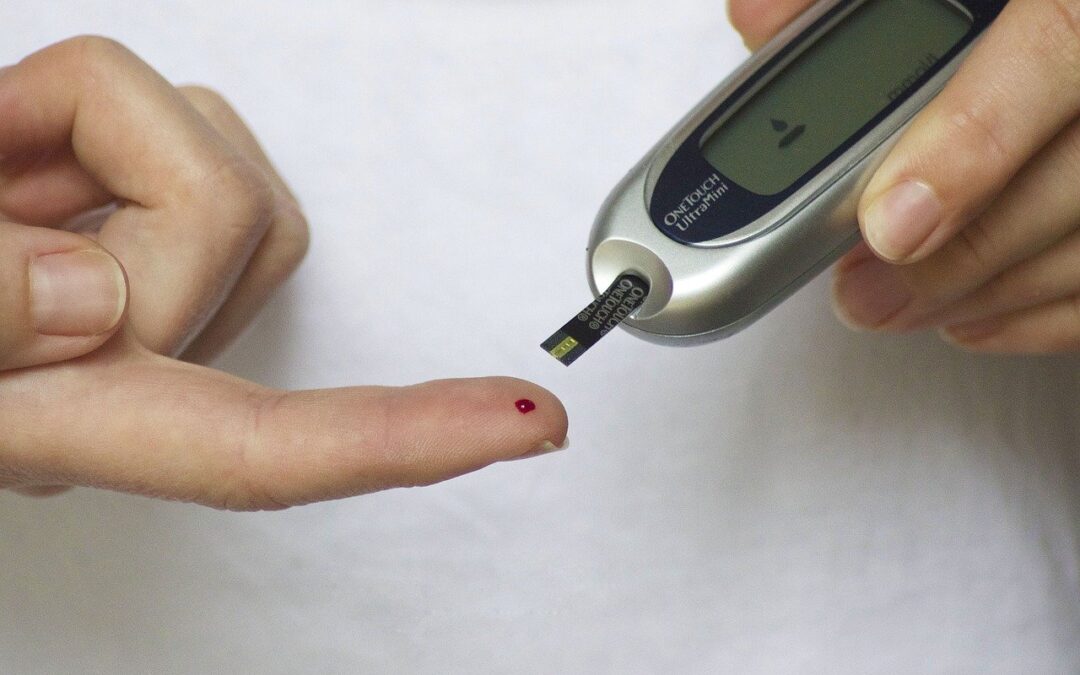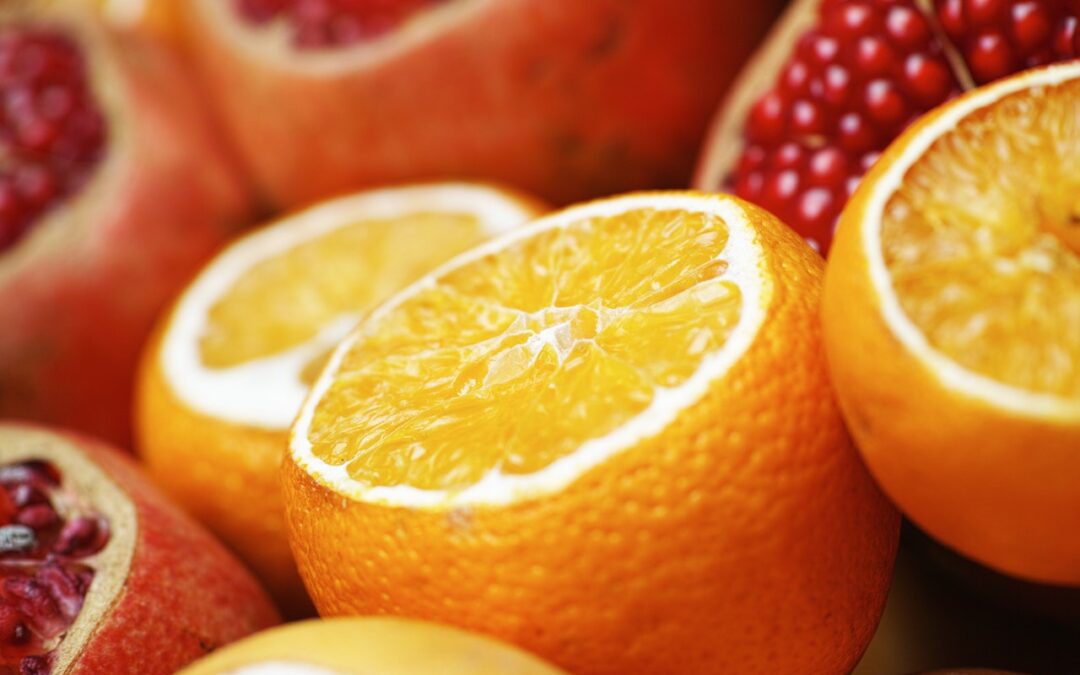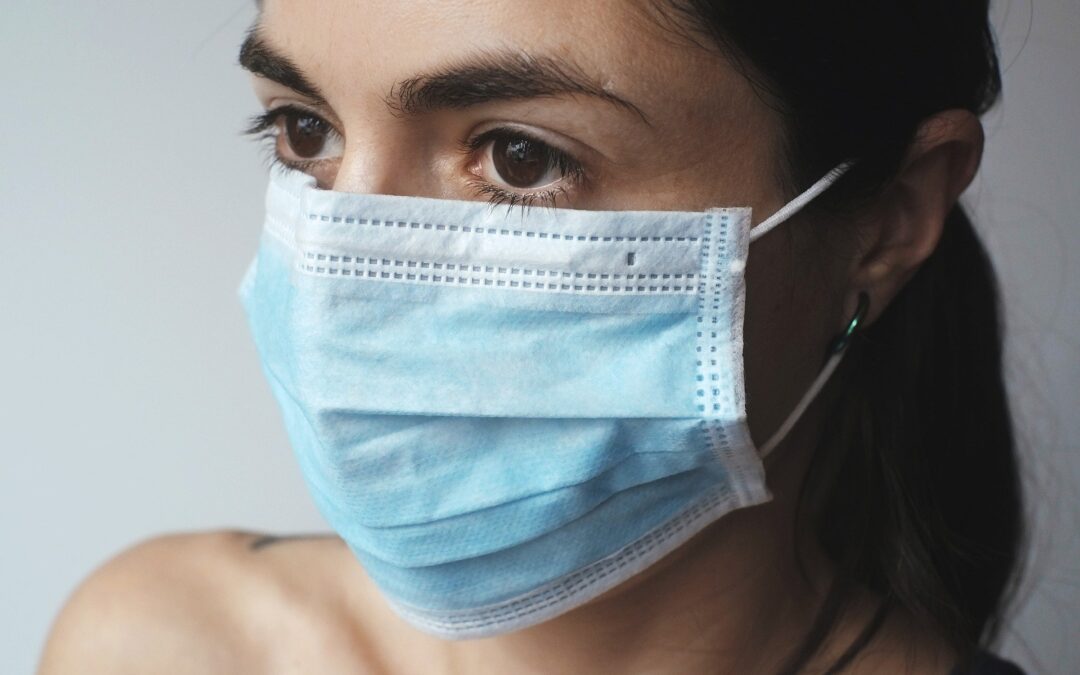
by Kirsten Chesney | Nov 5, 2020 | Chronic Health Conditions, COVID-19 Health Tips
November is National Diabetes Month. This rampant chronic disease can be debilitating and even deadly if left uncontrolled or mismanaged. In fact, about half of those with diabetes do not even know they have it! This is a dangerous place to be, and highlights the need to pay attention to risk factors and check glucose and insulin with your doctor. With diabetes affecting nearly 11% of the American population, raising awareness of this disease is critical, specifically during the COVID pandemic. As we have discussed, it is known that those with pre-existing medical conditions are more vulnerable to becoming severely ill from COVID-19, and diabetes is no exception. The CDC states that roughly 4 out of 10 people with COVID also have diabetes. This statistic should wake us up and spur us into action. We must be taking steps to prevent and even reverse type 2 diabetes while also keeping it well-managed. With a virus like COVID-19, we cannot afford to be at increased risk, especially when it is within our power to reduce that risk.
How Diabetes Increases Risk and Severity of COVID
You might be wondering how a virus is even linked to diabetes in the first place. I mean, one affects our immune system and the other affects our blood sugar. They seem like completely separate systems working independently of the other…right? Well, no. These systems are very much interconnected. Let’s find out how.
Through Chronic Inflammation:
Chronic disease of any kind (arthritis, IBS, COPD, heart disease, dementia) all have inflammation at its core. Diabetes is no different. Chronic disease leads to chronic inflammation. Inflammation is not meant to be chronic, however. It’s meant to occur quickly when there is acute injury or sickness, and this activates our immune system to jump into action and fight the threat. When inflammation is chronically activated….our immune system is also chronically activated. This puts stress on our immune system, making it hyper-responsive. This might sound like a good thing, but our bodies cannot exist in a constant hyper-responsive state. There must be an ebb and flow where body systems are activated, the threat is removed, and then body systems calm down. In essence, our immune system cannot keep up with the demand (just like insulin cannot keep up with the demand from high blood sugar). When any body system cannot keep up, it slows down. When our immune system is overworked dealing with chronic inflammation, it is slow to respond to acute threats, such as a bleeding hand or the flu. Our immune system then becomes weakened, which affects how well we can fight off viruses, including COVID.
Through High Blood Sugar:
Our immune system is not only affected by chronic inflammation. It is also affected by high blood sugar. Low and chronic inflammation damages our pancreas. The pancreas is where insulin is made and a damaged pancreas leads to decreased insulin production. With less insulin to escort glucose into our body cells, glucose now hangs out in our blood stream causing high blood sugar. Sugar molecules in our bloodstream can weaken our immune cells, making it harder to control the spread of infection. The exact mechanism of how high blood sugar weakens our immune response is still being researched, but one thing is clear: those with diabetes are more susceptible to infections.
Through Poor Blood Circulation:
Chronic inflammation and high blood sugar are enough reasons to weaken our immune system, right? Well, we have one more: narrow blood vessels. High blood sugar can stiffen blood vessels by reducing how well our vessels can dilate (called vasodilation). Stiffened blood vessels restrict blood flow and lead to poor circulation. This leads to high blood pressure, lack of oxygen in blood cells, and even cell death in our extremities (causing necrosis and amputation). Our circulatory system carries oxygen and nutrients throughout the body. It also carries immune cells. When we have low blood flow from narrow vessels, our immune cells cannot travel quickly or in the right numbers to the site of infection. Essentially, constricted blood vessels cause our immune fighters to not only arrive late but also to show up understaffed.
I Have Diabetes. What Can I Do To Protect Against COVID?
As we have learned, those with diabetes are put at increased risk for getting COVID for a few reasons: having chronic inflammation, elevated glucose levels, and poor blood circulation. These factors all lead to a compromised immune system. There are steps you can take to lower your risk of getting COVID, which includes addressing inflammation and high blood sugar.
Follow CDC Guidelines:
The guidelines laid out by the CDC, which we have covered before in previous blogs, are recommended for all people but are doubly important for those with diabetes and other chronic conditions. A short summary of these well-known CDC guidelines are below:
- Wash hands frequently
- Avoid touching your face
- Wear a mask when in public areas and when meeting with people
- Maintain a 6-foot distance between people when in public places
- Disinfect high-touch surfaces in your home and workplace frequently
- Avoid sharing food, utensils, towels, etc.
- Cover your mouth and nose when sneezing or coughing
- Avoid contact with anyone having respiratory symptoms, including a cough
- Avoid unnecessary travel, public transport, and large gatherings
Manage Your Diabetes:
In addition to following the above guidelines, those with diabetes should also follow specific action steps to manage their condition.
- Pay close attention to glucose levels through regular monitoring throughout the day, both before and after meals as well as upon waking up
- Stay hydrated throughout the day. Drinking plenty of water helps your kidneys flush out excess blood sugar through the urine
- Ensure you have enough insulin to carry you for a few weeks should you need to self-quarantine
- Always be prepared to quickly address sudden blood sugar drops, including while away from home or in the car
- If you live alone, alert a neighbor or nearby friend that you have diabetes and have them able to assist you if you become ill
- Keep a manageable schedule and avoid overworking and late nights
- Prioritize getting good sleep
- If you develop respiratory or flu-like symptoms, alert your doctor immediately. He or she can guide you in what to do and if you should be seen. Coughing up mucus can point to an infection and warrants immediate treatment
Get The Right Nutrition:
Choosing the right foods is the number one way to stabilize blood sugar and is a key component in managing diabetes. Additionally, the right nutrition focuses on anti-inflammatory foods, thus lowering chronic inflammation. Incorporate the following eating habits into your daily routine.
Pay attention to the Glycemic Index (GI) and Glycemic Load (GL) of the carbohydrates you eat.
- Carbs that have a low GI or GL slowly release glucose into your body, resulting in a healthy, steady rise and gentle fall. High GI or GL carbs, on the other hand, release glucose quickly, giving you a quick spike and impairing glucose control.
- Eat foods on the low end of these measurements. Food with a low Glycemic Index is anything under 55, while a low Glycemic Load is any food under 10.
- Glycemic Load is a more accurate measurement to follow. Many foods have a high Glycemic Index but a low Glycemic Load. When there is disparity like this, opt for low Glycemic Load.
- Pay attention to serving sizes! Eating large servings will quickly raise a low food measurement to a high food measurement.
- See this chart for a list of foods and their associated Glycemic Index and Glycemic Loads
Prioritize green leafy vegetables! These are packed with nutrients, many of which are not found in other foods in the right amounts. Further, most people are deficient in several of these nutrients, so it’s impossible to eat too many greens!
Eat healthy fats, primarily from plant foods. Healthy fats are omega 3 fatty acids and monounsaturated fatty acids. These fats are found in fish, nuts, chia seeds, flaxseeds, avocados, olives, quinoa, and eggs. Coconut oil is also very healthy, despite its saturated fat content.
Eat lean protein. This includes fish, lean meats, eggs, and beans
Avoid eating fried foods, such as French fries, fried chicken, fried seafood, mozzarella sticks, etc. Fried foods are made using harmful seed oils that increase inflammation
Avoid high-sugar foods and anything with added sugars. Whole fruit is an exception, in moderation (2 servings per day). Be aware that some fruits have a high Glycemic Load.
Form an Exercise Routine:
Workout facilities such as gyms, sports centers, public pools, or YMCA’s may be closed or have limits on how many people can enter. This needn’t discourage you from exercising though. There are several ways to exercise without going to a gym. Those with diabetes should especially increase their physical activity, as it is an important part of diabetes management. Any physical activity that increases your breathing and heart rate will draw more glucose into your muscles (and out of your bloodstream) while also increasing insulin sensitivity. Here are several ways to get moderate-intensity exercise into your day:
- If you have a treadmill or elliptical machine at home, aim for one hour of brisk walking. This hour can be divided into three 20-minute sessions if needed. Increasing the slope on the treadmill will provide additional benefits. Brisk walking around your neighborhood or along a trail provides these same benefits
- If you have a stationary bike, aim for 30 minutes (or two 15-minute sessions) while slowly increasing the pedal resistance. Lower the resistance during the last 2 minutes as you cool down. Biking along a trail or street provides these same benefits
- Bodyweight exercises are done without any equipment. These include push-ups, crunches, sit-ups, squats, lunges, and planks
- Hand weights and bands elevate the intensity and resistance of bodyweight exercises. Lifting hand weights, using resistance bands for your legs, or securing a handled band in a doorframe are great ways to vary your exercise routine
- Stretching exercises are great for joint mobility and lower-back muscles. Common stretches work just fine, as well as following a yoga or Pilates routine
- If you have stairs in your home and are more accustomed to exercise, challenge yourself to do 5 trips up and down the stairs
The link between diabetes and the COVID-19 virus is undeniable, with about 40% of COVID cases also having diabetes. The very nature of diabetes, its causes and symptoms, cause a downward cascade of events that ends with a weakened immune system and a delayed immune response. This allows any pathogen (viral, bacterial, or fungal) to more easily overcome our defenses causing active infection and symptoms. Fortunately, there are steps we can take to help prevent the COVID virus–by following CDC guidelines, managing diabetes, and eating nutrient-rich whole foods. The link between diabetes and COVID does not mean we give up. Rather, it motivates us to develop new habits, develop healthier lifestyles, and stay one step ahead of this pandemic.

by Kirsten Chesney | Sep 7, 2020 | COVID-19 Health Tips
Even while business doors are slowly opening and restaurants now have dine-in service, it is even more imperative to strengthen your immune health. Why? If you are a business owner or employee who now has returned to work, you are being exposed to dozens more people in one day than you did when you stayed at home. Having more people in stores means an increased risk of spreading sickness (whether COVID-19 or not) and consequently weakening your immune system. As things reopen and people resume normal business and errands, your immune system is going to be bombarded by exposures that it didn’t have before. Therefore, it is important to keep your immune system strong. Let’s now check out some valuable supplements and foods that support immunity.
Vitamins:
Vitamins C, D, and A:
Everyone knows vitamin C to fight against infections, both bacterial and viral. It can also shorten the duration of colds if you take it regularly before getting sick. Vitamin C is found in citrus fruits, broccoli, Brussel sprouts, cauliflower, bell peppers, spinach, sweet potatoes, and tomatoes. It is also taken as a supplement.
Vitamin D, the sunshine vitamin, also supports the immune system and reduces the risk of getting colds and the flu. A huge percentage of Americans are deficient in vitamin D since it is in a limited number of food, is not converted well in our bodies into the active form, and we enjoy less time in the sun per day than our grandparents did. For most people, supplementing with vitamin D3 each day is the best way to get its many benefits. Other ways to get vitamin D is to eat regular amounts of salmon, sardines, tuna, egg yolks, mushrooms, or some fortified foods like orange juice.
Vitamin A is very useful in fighting respiratory infections, however many people are low in this vitamin. In its active form, vitamin A is found in liver, eggs, shrimp, salmon, sardines, tuna, cheese, yogurt, whole milk, and some fortified foods.
Minerals:
Zinc and Selenium:
Zinc has long been used to boost immunity. As a cold remedy, it’s usually available as a throat lozenge and can ease the severity of a cold when taken at the first symptoms. Zinc is found in beef, lamb, sesame and pumpkin seeds, lentils, beans, cashews, and quinoa.
Selenium is an antioxidant that strengthens our ability to fight off bacteria, viruses, and even cancer cells. The best source of selenium actually comes from Brazil nuts. Eating two nuts per day will meet your selenium requirements. Other sources of selenium are fish, shellfish, beef, poultry, mushrooms, asparagus, tofu, eggs, and barley.
Foods:
Honey and Garlic:
Raw honey is wonderful for relieving minor pain and inflammation in our nose and throat. It also acts as an antimicrobial and can be added to hot tea to treat coughs and sore throats.
Garlic is well known as an antimicrobial food. This property also works well in supplement form or for aged garlic. Garlic can reduce the severity of upper respiratory infections caused by viruses. It can also prevent colds.
So before heading out for a nice dinner or a stroll through a retail store, remember to focus on these vitamins, minerals, and foods that will strengthen your immune system and prep you for being around people. Your body will thank you!

by Kirsten Chesney | Sep 2, 2020 | COVID-19 Health Tips
For many of us, it feels as if this pandemic has been with us forever. When I watch a movie I can’t help but feel a bit uncomfortable when there’s a scene of a group of people chatting. “Where are their masks?!” I think to myself. Anymore, it’s only in movies where we see people without masks on. Such scenes seem out of place now.
And masks are just a small part of the changes we’ve seen over the last 6 months. Social distancing rules are posted in every store window and colored tape is measured out on every store floor. We are discouraged from connecting with others…and this can be discouraging.
The Effects of Being Lonely
Older adults, whose children have long left home, are at increased risk of becoming lonely. In fact, more than 40% of seniors regularly experience loneliness (according to a study performed by the University of California, San Francisco). And this statistic was before the pandemic. Furthermore, the feelings of disconnection may lead to serious health problems:
- Lonely individuals have a 26% increased chance of mortality
- Lacking social connection raises the chance of developing dementia by 64%
- Loneliness can lead to 5% more severe symptoms when sick
- Loneliness is just as damaging to our health as smoking 15 cigarettes a day
It’s clear that loneliness has many damaging effects and that older adults are at increased risk. The rate of loneliness for older adults has only increased since the pandemic, as friends and family members keep their distance in efforts to protect seniors from getting sick.
How to Keep Connected and Healthy
The good news is that loneliness can be prevented and reversed. Here are a few ways to keep yourself going strong, mentally, emotionally, and physically.
Follow a Schedule
Remain accountable to yourself by creating a daily schedule. This will help things feel more normal as well as keeping you busy with tasks and projects. The key is to be an instigator of your day rather than a passive bystander. Proactively planning out your day and making a list of tasks puts you back in control.
Keep Your Mind Sharp
Learning something new engages your brain, fights boredom, and improves self-confidence. Signing up for an online course on history, nature, art, photography, or travel are all wonderful ways to learn new facts and excite your mind. You can find free learning lectures at Road Scholar.
Besides learning something new, doing simple puzzles are wonderful ways to focus your brain. Sudoku, crossword puzzles, word search, solitaire, MaJong or Tetris online, and adult coloring books are some examples of mental exercises for your day.
Tap Into Your Strengths
Don’t lose sight of your passions during this pandemic. Make a list of things you enjoy doing, even if you haven’t done them in a while, and pick them up again. That might be cooking, gardening, needlework, compiling a photo album, writing, jewelry making, researching your ancestry to create a family tree, or reading a new book by your favorite author.
If you’re looking to help out other people, VolunteerMatch lists thousands of volunteer projects that are needed across the country. And they can all be done virtually! Examples include teaching children, lending expertise to organizations, creating birthday cards, researching for a podcast show, managing Red Cross volunteers via phone and email, and much more! Learn more, here
Check-In With Friends and Family
There are countless ways to stay in touch with loved ones these days. Calling them on the phone will always work well. Texting, emailing, or mailing them a letter are other wonderful ways to stay in touch. Video chat apps are other great tools, allowing you to see the person you’re talking with. FaceTime, Google Hangouts, Google Duo, Facebook Messenger, and Skype, are all great apps for video chatting.
More and more, people are organizing virtual get-togethers using these video chat platforms. Group sessions like this allow you to play cards, board games, swap stories, etc with several people each from their own home.
Stay Active
Last but not least, keep up a physical exercise routine and write it in your schedule. This can be outside activities such as, riding your bike, walking around the neighborhood, trying out a local trail, or playing fetch with your dog. Activities indoors can include lifting hand weights, using stretchy exercise bands, balancing on a large yoga ball, or following along with a YouTube exercise class. Lastly, physical activity also includes those activities of regular living such as vacuuming, sweeping, carrying laundry downstairs, or home repair or design projects (like painting or building a bench).
Older adults are at higher risk of loneliness, even before the pandemic. Today more than ever, it is important for older adults to keep engaged with the world and with people as much as possible. There are several ways to accomplish this and create healthy habits mentally, emotionally, and physically. Adapting to a new routine and a new definition of “normal” is the only way to conquer loneliness and stay proactive.

by Kirsten Chesney | Jul 24, 2020 | COVID-19 Health Tips
Most of us are familiar with the common symptoms of COVID-19. These include fever, cough, and shortness of breath. However, don’t take this to the bank! COVID-19 does not always present with these symptoms! Some people with COVID experience different symptoms altogether. A recent study has revealed a variety of additional symptoms that can present themselves including, loss of appetite, loss of smell, diarrhea, fatigue, confusion, headaches, and muscle pain.
The COVID Symptom Study:
The COVID Symptom Study has been ongoing since March and over 4 million people in the US and UK are participating. This makes it the largest study in the world of its kind. Participating is easy: people simply log their health and symptoms on a daily basis through the COVID Symptom Study app (even if they are feeling well). Scientists have been analyzing this self-reported data from the app users and are making several new discoveries.
One such discovery is the finding that there are six distinct clusters of symptoms that those with COVID-19 can present with. Each cluster also dictates how severely the virus will act upon a person and whether they need respiratory support. This particular study looked at 2,700 app users and their self-reported symptoms between May 1–28, 2020. The vast majority of these participants were from the UK with nearly 8% from the United States.
While the severity of these symptom clusters varies among COVID-infected people, the first three clusters are statistically less severe than the last three clusters. Let’s take a look:
Six Clusters of Symptoms for COVID:
1) Flu-like with no fever: loss of smell, headache, cough, chest pain, sore throat, muscle pain, no fever. 1.5% need respiratory support
2) Flu-like with fever: loss of smell, headache, cough, sore throat, hoarseness, loss of appetite, fever. 4.4% need respiratory support
3) Gastrointestinal: loss of smell, headache, no cough, no fever, chest pain, sore throat, diarrhea. 3% need respiratory support
4) Severe level 1- Fatigue: loss of smell, headache, cough, chest pain, hoarseness, fever, fatigue. 6% need respiratory support
5) Severe level 2- Confusion: loss of smell, headache, cough, chest pain, sore throat, hoarseness, loss of appetite, fever, fatigue, muscle pain, confusion. 9.9% need respiratory support
6) Severe level 3- Abdominal and Respiratory: loss of smell, headache, cough, chest pain, sore throat, hoarseness, loss of appetite, fever, fatigue, muscle pain, confusion, shortness of breath, diarrhea, abdominal pain. 19.8% need respiratory support
As you can see, loss of smell and headache are the only symptoms common in all six clusters, while cough, fever, chest pain, and sore throat are common to five of the six clusters. Two to three of the clusters include abdominal symptoms, hoarseness, loss of appetite, confusion, fatigue, and muscle pain. Surprisingly, shortness of breath is only found in one cluster.
Cluster Severity and Who is at Risk:
These symptom clusters were further broken down by the likelihood of patients needing respiratory support. It is clear that cluster 6 patients have a much higher rate of needing support than those of other clusters. Of the study participants in cluster 6, almost 50% of them had to go to the hospital. This is compared to 16% hospitalized from cluster 1.
Those participants who were in clusters 4, 5, and 6 were statistically older and more fragile than those in clusters 1, 2, and 3. They were also commonly overweight or had a chronic health condition such as diabetes or lung disease.
The importance of this study is to help doctors and patients be aware of the various levels of COVID symptoms, and to act quickly if a person falls into a high-risk symptom cluster. For each of us, it’s ever more important to take note of any symptoms we’re having. Even if our symptoms are not “classic” COVID symptoms, they may be part of a different symptom cluster of lesser severity. Let’s remain alert, informed, and always strengthen our immune system!
The full study can be found at:
https://www.medrxiv.org/content/10.1101/2020.06.12.20129056v1.full.pdf

by Kirsten Chesney | Apr 16, 2020 | COVID-19 Health Tips
Be sure you are taking steps to minimize your risk of being exposed to the COVID-19 virus, and to strengthen your immunity in case you are exposed.
Best Daily Practices:
–Wash your hands! This bears repeating since it is the most well-established way to ward off bacterial and viral infections. Be sure to wash your hands frequently and thoroughly with warm water and soap for at least 20 seconds. If soap and water is not available, hand sanitizer will also work. Ensure it contains at least 60% alcohol. Do your best to avoid hand sanitizer that contains Triclosan, as this chemical is known to disrupt our hormone balance.
–Cover your nose and mouth: When sneezing or coughing, cover your nose and mouth with the crook of your arm and sleeve (do not use your hand!)
–Avoid touching your face: If you have the virus on your fingers and then touch your eyes, nose, or mouth, the virus is now able to enter your body. Avoiding touching your face is tricky to do, but it is important to heed. If you have an itch, use your sleeve or your shoulder to scratch it.
–Clean high-touch surfaces: Disinfect surfaces that are frequently touched, such as doorknobs, keyboards, TV remotes, phones, and kitchen and bathroom counters. The virus can remain on surfaces for up to several days after an unwashed hand touches them.
If You Get Sick:
–Respiratory infection: If you develop an upper respiratory infection, aiming for over-the-counter medications will only abate your symptoms but without boosting your immune system. For immune-fighting modalities, focus on getting rest and drinking fluids. Good immune-boosting fluids would be, vegetable broth, bone broth, and herbal teas. Specific herbal teas to try include, ginger, peppermint, chamomile, eucalyptus, and hot water with lemon, honey, and cinnamon sprinkled in.
–Sore throat: If you feel a sore throat coming on, you’ll want to fend off any looming bacterial infection quickly. Although this isn’t the Corona virus, it still should be taken seriously since any illness will tax the immune system, making it difficult to fight off Corona virus germs. Taking slippery elm, whether in a hot tea or as a throat lozenge, is wonderful for easing sore throats. Sipping hot water with two tablespoons of honey will also be soothing and decrease inflammation in the throat. Lastly, herbal teas such as chamomile, peppermint, or those that contain marshmallow root or licorice root will all sooth and relieve pain from a sore throat.
–Sinus congestion: Decongestant remedies are found in a variety of essential oils such as, menthol, peppermint, eucalyptus, and frankincense. Find ways to use these oils in your vaporizer or steam inhaler. A neti pot or nasal irrigation bottle is another way to alleviate congestion. Buffered saline can be used in the neti pot to soothe irritated mucous membranes. Lastly, nasal sprays with xylitol will further soothe and moisturize nasal passages.
Supplements and Foods:
–Vitamin C: This might be a no-brainer, but vitamin C remains a top-player for it’s immune-boosting and antioxidant activities. It is key to fighting off bacterial and viral infections and can shorten the duration of colds.
–Vitamin D3: This mighty vitamin is notoriously low in most people, due to less time spent out in the sun coupled with a slow/poor ability to convert sunlight into active vitamin D. This nutrient also happens to be a very powerful supporter of the immune system as it reduces the risk of getting colds and the flu.
–Zinc: This mineral plays a vital role in strengthening the immune system (to the point that people created zinc lozenges as a cold remedy). It also helps reduce the number of times a person gets sick, as well as lessens the severity of cold symptoms.
–Selenium: Another important nutrient for our immune system, selenium is an antioxidant and strengthens our ability to fight bacteria, viruses, and even cancer cells! The easiest way to take Selenium is by eating two Brazil nuts per day. That was easy!
–Garlic: A compound, called allicin, is what makes garlic a powerful antimicrobial food. Garlic has been shown to reduce the severity of viral infections as well as upper respiratory infections. It can also help prevent the common cold virus from taking hold.
**Note that these suggestions, and others that are presented to you throughout the media and internet, are best practices for decreasing your risk of contracting bacterial and viral infections in general, as well as boosting the immune system overall. These are not proven practices against the COVID-19 virus specifically, as there is not yet a proven way to ward off the COVID-19 virus in particular.

by Kirsten Chesney | Apr 16, 2020 | COVID-19 Health Tips
With all the information out there about COVID-19, the feeling of stress or being overwhelmed can quickly sneak upon us. Spending too much time researching this virus can compromise our health and wellbeing. The impact of COVID-19 in the US and throughout the world can indeed be worrisome. Being alert and aware of updates is a good practice, but not to the point where it detracts from our physical and mental health.
We already know that stress causes negative impacts on people’s health. Chronic stress even has the power to weaken our immune system so that we are more likely to get sick. Reducing stress is not just good for our mental health but it also helps our immune system to be more sensitive to pathogens (as it should).
Check out these stress management techniques to reclaim your health and reduce your risk of contracting a viral infection like COVID-19:
Stress Reducing Strategies:
· Create a Stress-Free Environment: Create an environment in your home that is relaxing for your senses. Your bedroom is not the only place that is allowed to be comfortable. Try including soft pillows or throws on the couch, light candles throughout the living room, or place an aromatherapy diffuser in the kitchen. Choose a calming playlist and fill your home with relaxing or inspiring music. Whatever you do, make sure that your home is inviting, warm, and reflects a stress-free environment.
· Practice Gratitude: Negative thoughts easily surface to the front of our minds during uncertain times. It is imperative to bring everything under perspective and look for ways to model gratitude. This country was built upon ingenuity, resourcefulness, and hard work from the ground up. We have it in us to be resourceful when finances or social distancing make things difficult. Finding unique ways to solve a problem puts our situation back under our control. We can be grateful for this. Try making a list of things, circumstances, and people that you are grateful for. Share this list with those close to you. You might create a ripple effect on others!
· Meditate: Mindfulness meditation has proven positive impacts on mental and physical health. Check out the many free videos and apps on meditation, breathing exercises, and mindfulness practices. Each one is different so find one that works best for you.
· Avoid information overload: When it comes to a novel (new) infectious disease, emerging news coverage is often later found to be inaccurate. Even the experts agree that they simply don’t know enough about this new virus. The news reports updates but those updates often get tweaked or adjusted as new information comes to light. During this time, it is best to acknowledge that nobody has all the answers, and that some news will naturally be inaccurate until more is known. Try setting boundaries on your time researching the corona virus to 30 minutes per day.
· Exercise: You may be tired of hearing it but exercise is a perfect way to lower anxiety and depression, increase brain function, and decrease stress. Not to mention it can be an ideal social distancing activity. Find something you enjoy doing that involves physical movement. That may be walking, swimming, yoga, dancing, or kick-boxing! If setting aside large chunks of time isn’t your bag, aim for doing intentional movements while you do other daily activities. This can be holding a yoga pose while waiting for the oven to preheat, or doing squats while brushing your teeth!
Stress reduction techniques are critical during this time. If you find yourself extra anxious or depressed from grim news updates, a heavy financial burden, or the lack of in-person social support, incorporate these techniques and notice how your mental health and mood is lifted.






